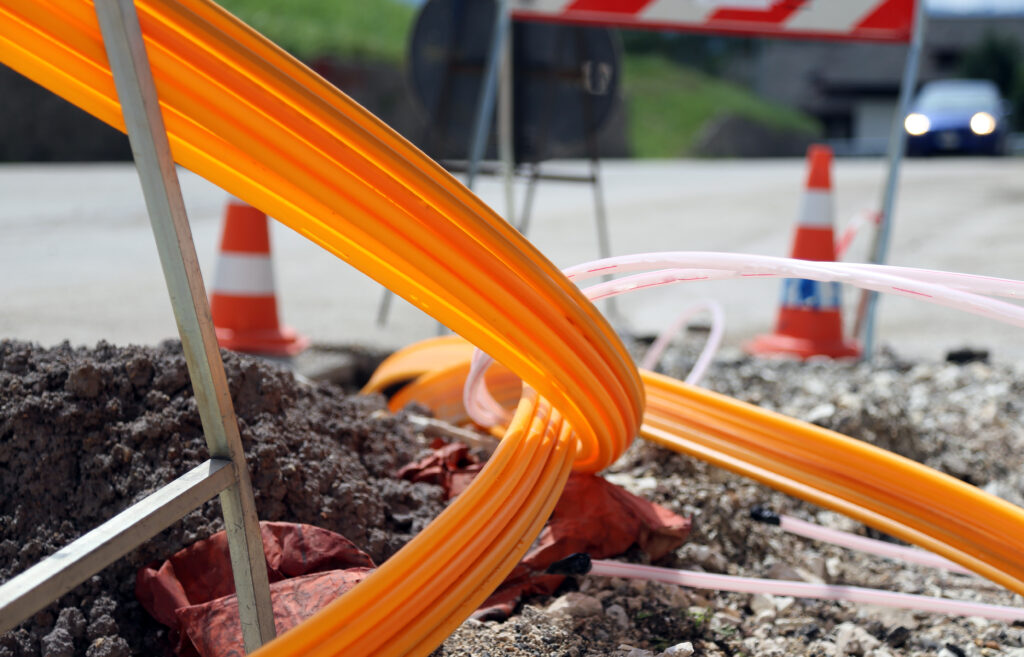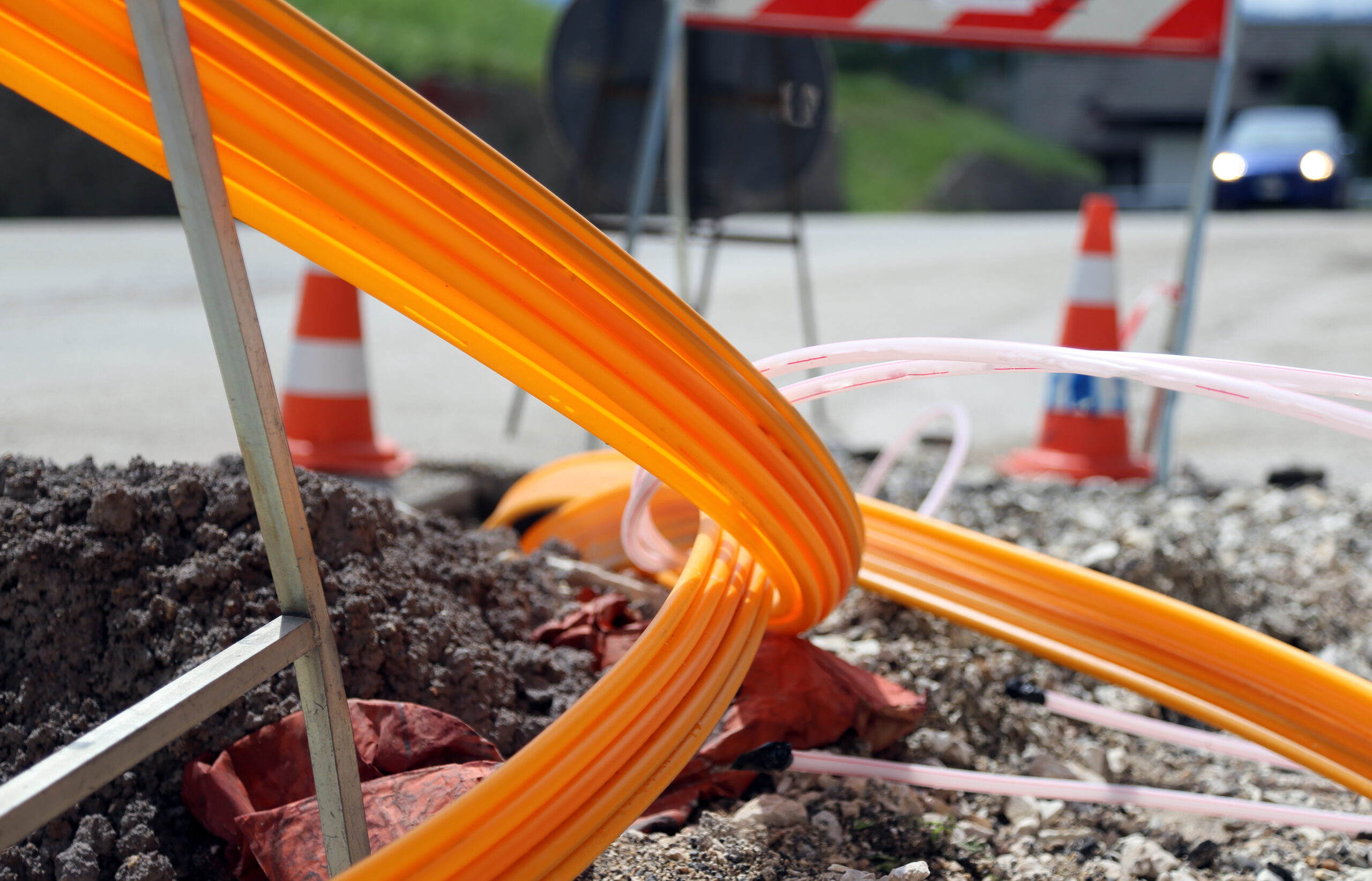
Simply put, fiber is the way in which service is delivered to your home. In telecommunications, fiber-optic cables are thin strands of glass or plastic that are used to transmit data in the form of light pulses. These cables are designed to carry information over long distances and at high speeds, making them a crucial part of modern communication networks. Dakota Central began its Fiber-To-The-Home project in 2000, as the first company in North Dakota to deploy a fiber network!
Here’s how fiber-optic cables work:
Light Transmission: Instead of using electrical signals to transmit data, fiber-optic cables use light pulses. A laser or light-emitting diode (LED) generates these light pulses, which travel through the core of the fiber-optic cable.
Total Internal Reflection: The core of the fiber-optic cable is surrounded by a cladding layer with a lower refractive index. This design allows for total internal reflection, which means that the light pulses can travel through the core without significant loss of signal strength.
Data Transmission: The light pulses represent binary data (0s and 1s). By modulating the intensity or frequency of the light, data can be transmitted rapidly and accurately through the fiber-optic cable.
Fiber-optic cables offer several advantages over traditional copper cables, including:
Higher Bandwidth: Fiber-optic cables can carry much more data compared to copper cables. This high bandwidth makes them ideal for transmitting large amounts of information, such as high-definition video and complex data.
Faster Speeds: Data can be transmitted at the speed of light through fiber-optic cables, providing incredibly fast communication and internet speeds.
Low Latency: Fiber-optic connections have lower latency, which means that there is minimal delay in transmitting data signals. This is especially important for real-time applications like online gaming and video conferencing.
Less Signal Degradation: Unlike copper cables, fiber-optic signals do not degrade as much over long distances. This allows for reliable communication over extended geographical areas.
Immunity to Electromagnetic Interference: Fiber-optic cables are not affected by electromagnetic interference, making them suitable for areas with high electrical interference.
Due to these advantages, fiber-optic technology is widely used in various applications, including internet connections, telephone systems, cable television, and networking infrastructure. Curious about how fiber-optic technology benefits you? Follow the link below for more information!
